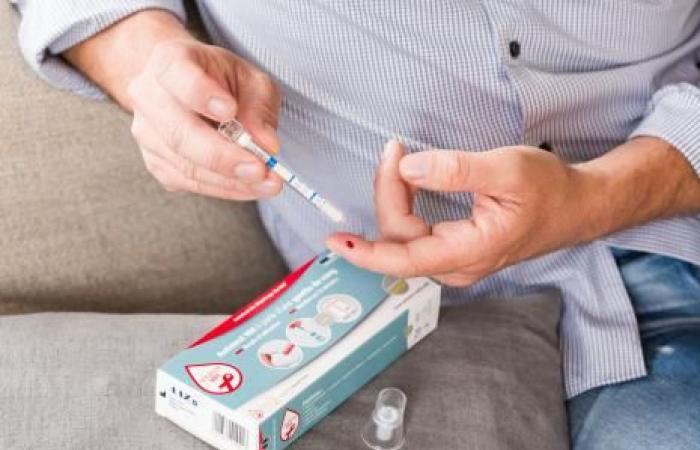In 2023, nearly 170,000 HIV self-tests will be sold in pharmacies in France. But only 38% of pharmacies think about giving buyers of these tests a yellow DASTRI box in order to eliminate the lancing device, according to the IFOP-DASTRI 2024 barometer.
If the percentage of pharmacists declaring that they sell HIV self-tests is relatively stable (53% in 2024 versus 52% in 2023 and 51% in 2022), this proportion differs significantly depending on the territory. This is the case for 81% of pharmacists operating in Île-de-France, for 47% of pharmacists based in the provinces and for only 30% of pharmacists overseas, reveals the IFOP-DASTRI 2024 barometer.
Furthermore, the pharmacists who sell these HIV self-tests, which include a lancing device, do not think enough about giving a yellow box to people who buy them. In fact, only 38% of pharmacies have thought about it. “Paradoxically, it is overseas, where the sale of self-tests is least widespread, that the practice of prevention – providing a free yellow DASTRI box to the user upon purchase so that they can storing the lancing device after use – is best observed by pharmacists: 69% of pharmacists based in Overseas give a DASTRI box to the user when selling HIV self-tests. In this case, only 42% are in Île-de-France, a region in which the sale of self-tests concerns 81% of pharmacies, and 36% in the provinces.details the eco-organization DASTRI. Those who do not do so declare “not having thought about it”. Conversely, pharmacists who offer a yellow box with the self-test note very good acceptance by users: 95%, or almost all, and a very consistent score from one territory to another, accept the box offered.
For purchasers of the HIV test who have been given a yellow box, the correct sorting action is not always adopted. In fact, only 58% return the lancing device to the pharmacy in the box, while 36% put the lancing device in the box but then throw it in the trash; 6% do not use the box but, in this case, a significant proportion (42%) nevertheless bring the lancing device to the pharmacy.
As for buyers who did not receive a box (52% of the sample), 58% nevertheless made the effort to return the lancing device to the pharmacy; 42% dispose of it with household waste or throw it away with recyclables. In total, 60.5% of lancing devices are reported in pharmacies in 2024 (+3.5 points vs. 2023)
“The results of the study nevertheless show that users are aware of the risk incurred by staff who sort waste, since some make the effort to return the lancing device to the pharmacy even though they have not received a container appropriate, underlines Laurence Bouret, general delegate of DASTRI. Our awareness-raising effort must therefore primarily focus on pharmacists, to encourage them to be more proactive in this area, particularly in Île-de-France. The score achieved by overseas pharmacists shows that it is possible to do better! »






